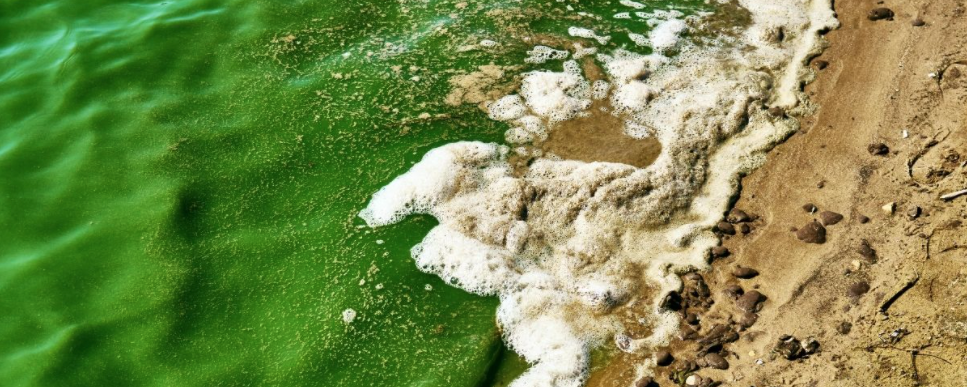Blooms can be toxic to humans, pets, and wildlife
||| FROM STATE DEPARTMENT OF HEALTH |||
OLYMPIA — Washington State Department of Health is advising the public to take precautions while enjoying water recreation this summer. Harmful algae blooms have been found in some Washington lakes and rivers. Algae can vary in appearance, but commonly look like pea soup or are blue-green or turquoise in color.
A harmful algae bloom occurs when algae with toxic strains starts to grow in freshwater or saltwater. Freshwater algae blooms caused by cyanobacteria (blue-green algae) are most common in lakes, but can occur in rivers and streams with warm, slow moving and stagnant waters.
DOH, Washington State Department of Ecology, and Spokane Regional Health District are investigating Spokane area water sources following the deaths of three dogs after swimming in the Little Spokane River near Chatteroy and illness in one dog after swimming in the Spokane River near Harvard Road Bridge. While cyanobacteria blooms in rivers are rare, the hot, dry weather and low water flows have led to confirmed blooms in both areas where the dogs had been swimming.
The toxicity of each bloom can vary and is difficult to predict. Toxicity can change from one day to the next. It isn’t possible to determine how dangerous a bloom is to people and animals by looking at it. Only testing can tell if it is dangerous.
The extreme heat this summer and lower than normal water levels can create an ideal environment for organisms to easily grow and multiply. “Due to ongoing drought and warm temperatures in our state, lakes, rivers, and streams are under tremendous stress right now,” said Acting Chief Science Officer Scott Lindquist, MD, MPH. “As a result, we are receiving reports of toxic algae blooms in areas we have not seen before.”
Dogs and other animals are often exposed by drinking contaminated water, swallowing water while swimming, or licking cyanobacteria from their fur. If you suspect your pets or livestock have been exposed to a toxic algae bloom, immediately wash them off with clean water to keep them from licking the bacteria off their fur. Possible signs that your pet might have been exposed to a harmful algae bloom may include vomiting and/or diarrhea, loss of coordination and tremors and seizures.
The public is encouraged to take the following precautions when choosing a body of water for recreation:
- Look for signs of toxic algae blooms and pay attention to signage. When in doubt, stay out!
- Do not swim in and limit exposure to water that is under a health advisory or is listed as having a toxic algae bloom on the Washington State Department of Ecology toxic algae tracking site.
- Individuals who swim or play in the water should shower with soap and water when done.
- Contact a healthcare provider immediately if you become ill or have symptoms of after a suspected exposure to algae bloom.
- Report suspected toxic algae blooms online at the Washington State toxic algae tracking site or contact your local health jurisdiction.
**If you are reading theOrcasonian for free, thank your fellow islanders. If you would like to support theOrcasonian CLICK HERE to set your modestly-priced, voluntary subscription. Otherwise, no worries; we’re happy to share with you.**







